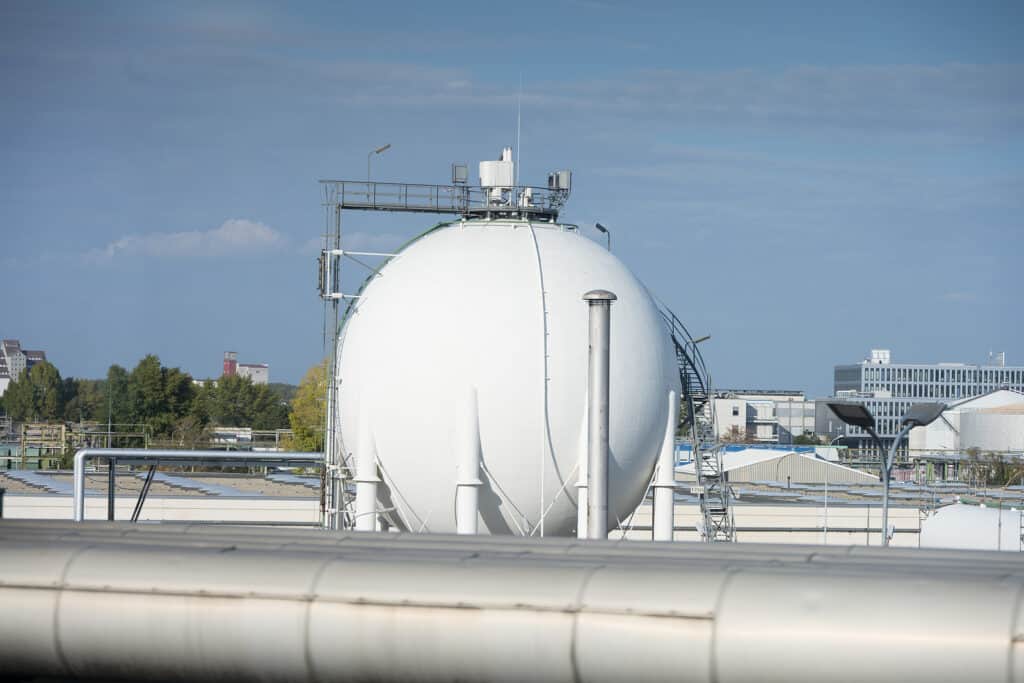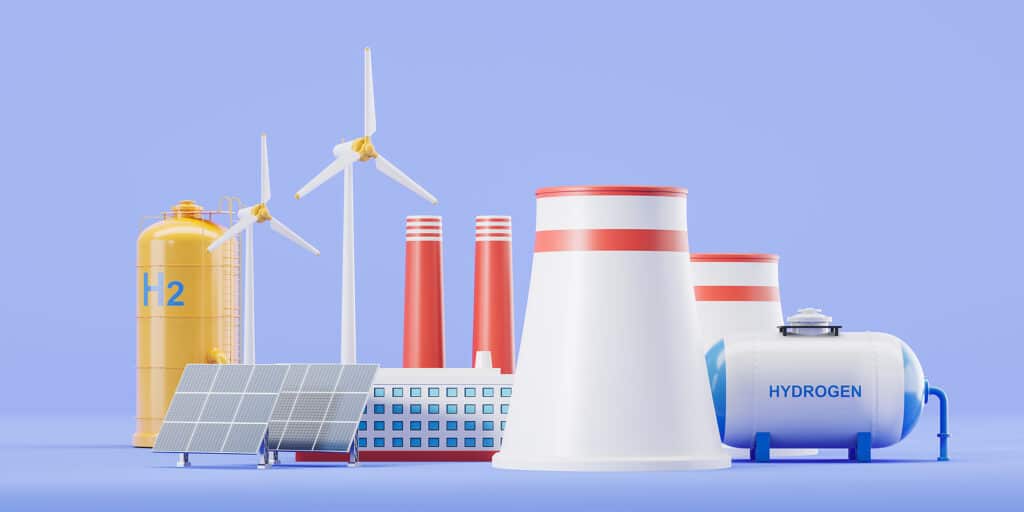Future of Energy Storage
The future of energy holds immense potential for companies seeking to reduce their peak power demand during high-demand periods. By minimizing strain on the grid and potentially qualifying for demand response programs, businesses can play a pivotal role in transforming the energy industry towards sustainability.
This article delves into the captivating world of emerging energy storage technologies, highlighting breakthrough advancements that can effectively capture and utilize renewable energy. Join us as we explore the exciting developments and trends that empower companies to optimize their energy usage and contribute to a greener future.
What is Energy Storage?
Energy storage plays a crucial role in modern society by enabling the efficient and reliable utilization of generated energy at a later time. It encompasses a wide range of technologies and methods that capture, store, and deliver energy when it is needed most.
One of the primary purposes of energy storage is to balance the supply and demand of electricity. The generation of electricity is often intermittent and varies based on factors like weather conditions, time of day, and consumer demand. Energy storage systems bridge the gap between these fluctuations, storing excess energy during times of low demand and releasing it during peak periods when demand is high. This helps to stabilize the electricity grid, ensuring a constant and reliable power supply.
Moreover, energy storage technologies facilitate the integration of renewable energy resources, such as solar and wind power, into the grid. These renewable sources are inherently intermittent, dependent on factors like sunlight and wind speed. By capturing surplus energy produced during favorable conditions and storing it for later use, energy storage systems mitigate the intermittency of renewables and enable a more consistent and dependable energy supply.

Understanding the Importance of Energy Storage
Energy storage technologies play a fundamental role in shaping the future of electrical power grids, ensuring their resilience, efficiency, sustainability, and economic viability. By capturing and storing surplus energy during periods of low demand, energy storage systems effectively address the challenge of temporal mismatch between energy generation and consumption.
One of the key benefits of energy storage is its ability to balance the supply and demand of electricity. Traditional power grids have relied on a “just-in-time” model, where electricity is generated as it is needed. However, this approach can lead to inefficiencies and energy wastage, especially during periods of low demand when excess energy is often discarded.
Energy storage technologies offer a solution by capturing this surplus energy and storing it for later use. When demand peaks, such as during periods of high energy consumption, the stored energy can be released back into the grid, effectively meeting the increased demand and reducing strain on the power generation infrastructure.
Breakthrough Energy Storage Technologies
In addition to the mentioned breakthrough energy storage technologies, there are several other innovative solutions that hold great promise for the future of energy storage:
Hydrogen Storage
Hydrogen has gained significant attention as a potential energy carrier and storage medium. It can be produced through electrolysis, storing excess renewable energy in the form of hydrogen gas. This stored hydrogen can then be used in fuel cells or other devices to generate electricity when needed. Hydrogen storage offers long-duration and high-capacity storage capabilities, making it suitable for applications that require large-scale energy storage over extended periods, such as seasonal future of energy storage and grid-scale integration of renewable energy sources.
Thermal Energy Storage
Thermal energy storage utilizes the principle of storing heat or cold for later use. This technology can be implemented in various forms, such as sensible heat storage, latent heat storage, or thermochemical storage. For example, in concentrated solar power (CSP) systems, excess heat generated during sunny periods can be stored in molten salts and later converted back into electricity when sunlight is not available. Thermal energy storage enables the efficient utilization of excess thermal energy, improving the overall efficiency of power generation systems and enabling the integration of renewable energy sources.
Gravity-based Energy Storage
Gravity-based energy storage systems utilize the potential energy of raised masses to store and release energy. One example is pumped hydroelectric storage, where excess electricity is used to pump water from a lower reservoir to a higher one. When electricity demand is high, the water is released downhill, passing through turbines to generate electricity. This method offers large-scale and long-duration future of energy storage capabilities, playing a vital role in stabilizing the grid and managing intermittent renewable energy sources.
Flywheel Energy Storage
Flywheel energy storage systems store energy by spinning a rotor at high speeds and then releasing it to generate electricity when needed. They offer rapid response times and high power density, making them suitable for applications requiring short bursts of energy, such as grid stabilization and uninterruptible power supply (UPS) systems. Recent advancements in flywheel technology, including the use of advanced materials and magnetic bearings, have increased their efficiency and reduced maintenance requirements.

Key Trends in Energy Storage
In addition to the aforementioned key trends in future of energy storage, several other noteworthy developments are shaping the future of this dynamic sector:
Hybrid Energy Storage Systems
Hybrid energy storage systems combine multiple storage technologies to leverage the strengths of each and address their limitations. For example, a hybrid system could integrate lithium-ion batteries for fast response times and short-term storage with flow batteries for long-duration storage. These hybrid systems offer enhanced flexibility, efficiency, and reliability, enabling optimal utilization of energy resources and meeting diverse energy storage requirements.
Second-Life Battery Systems
As the use of electric vehicles increases, a large number of lithium-ion batteries will reach their end-of-life in vehicles. However, these batteries can still have a significant amount of usable capacity remaining. Second-life battery systems repurpose these retired EV batteries for stationary future of energy storage applications, giving them a second lease on life. This approach not only reduces waste but also makes energy storage more affordable by utilizing existing resources.
Energy-as-a-Service (EaaS) Models
Energy-as-a-Service models are gaining traction in the energy storage sector. Instead of upfront capital investment, EaaS allows customers to access energy storage systems through a service agreement, paying only for the energy consumed. This model removes financial barriers and risks associated with ownership, making energy storage more accessible to a wider range of customers, including small businesses and residential users.
Advancements in Energy Management Software
Energy management software is becoming increasingly sophisticated, allowing for more precise control, optimization, and monitoring of energy storage systems. These software solutions leverage advanced algorithms and real-time data analysis to optimize energy usage, predict demand patterns, and enhance overall system efficiency. They enable intelligent energy management, integrating energy storage seamlessly into the broader energy ecosystem.
Electrification of Transportation and Energy Synergies
The electrification of transportation, coupled with energy storage, presents significant opportunities for synergy. Electric vehicles can act as mobile energy storage units, with bidirectional charging capabilities that allow them to supply electricity back to the grid during peak demand or emergency situations. This concept, known as vehicle-to-grid (V2G) technology, enables the seamless integration of transportation and energy systems, enhancing grid stability, supporting renewable energy integration, and maximizing the value of energy storage resources.
International Collaboration and Standardization
The energy storage sector is witnessing increased international collaboration and efforts towards standardization. Stakeholders are working together to develop common technical standards, protocols, and interoperability frameworks. These initiatives aim to streamline the deployment, integration, and operation of energy storage systems on a global scale, fostering greater market growth and enabling seamless cross-border energy transactions.
CNBC video to understand Energy Storage of the Future
Future Energy Storage Market Trends
The future of the energy storage market is poised for remarkable growth and transformation, driven by a confluence of factors such as declining costs, rapid technological advancements, and a heightened focus on sustainability. Several key trends are shaping the trajectory of this dynamic market.
Advanced Battery Technologies
Advanced battery technologies, including lithium-ion batteries and emerging options like solid-state batteries and lithium-sulfur batteries, are witnessing a surge in demand. These batteries offer higher energy density, longer lifespan, improved safety, and faster charging capabilities. As the demand for electric vehicles (EVs) continues to rise, the need for advanced batteries to power these vehicles efficiently and reliably is growing. Moreover, advanced batteries are crucial for various applications, including renewable energy integration, grid stabilization, and backup power systems.
Grid-Scale Energy Storage
The deployment of grid-scale energy storage projects is experiencing significant growth. These projects involve large-scale storage systems that provide stability and reliability to electrical grids. Grid-scale energy storage helps manage fluctuating energy supply from renewable sources, optimizes grid operations, and enables the delivery of stored energy during peak demand periods. The development of utility-scale energy storage projects is driven by the need to enhance grid flexibility, support renewable energy integration, and ensure grid resilience.
Vehicle-to-Grid (V2G) Technologies
V2G technologies are gaining traction as the electrification of transportation accelerates. These technologies enable bidirectional power flow between EVs and the electrical grid, allowing EVs to not only draw power from the grid but also supply excess energy back to it. By leveraging the energy storage capacity of EVs, V2G technologies offer opportunities for load balancing, demand response, and grid support services. This concept holds immense potential to create a more symbiotic relationship between the transportation and energy sectors, maximizing the utilization of EV batteries and contributing to grid stability.
Integration of Renewable Energy and Energy Storage
The integration of renewable energy sources, such as solar and wind power, with energy storage systems is gaining prominence. Energy storage plays a crucial role in addressing the intermittency and variability of renewable energy generation. By capturing and storing excess energy during favorable conditions and releasing it when demand is high or generation is low, energy storage systems enable a more consistent and reliable supply of clean energy. The synergy between renewables and energy storage contributes to decarbonization efforts and fosters a sustainable energy future.
Innovations in Materials and Manufacturing
Ongoing research and development efforts are focused on innovations in materials science and manufacturing processes for energy storage technologies. These innovations aim to enhance energy density, improve efficiency, reduce costs, and address environmental concerns. Advancements in electrode materials, electrolytes, and manufacturing techniques are expected to further drive the performance and affordability of energy storage systems, opening new possibilities for their widespread adoption.
Policy Support and Market Incentives
Governments and regulatory bodies worldwide are recognizing the importance of energy storage in achieving clean energy goals. Supportive policies and market incentives, such as investment tax credits, feed-in tariffs, and capacity market mechanisms, are being implemented to accelerate the deployment of energy storage systems. These initiatives create a favorable investment environment, attract private sector participation, and stimulate market growth.
Video from Freethink The future of high energy density batteries
Conclusion
In conclusion, the future of energy storage holds immense promise and potential, both for companies seeking to optimize their energy usage and contribute to a greener future. By reducing peak power demand, minimizing strain on the grid, and embracing emerging energy storage technologies, businesses can play a pivotal role in transforming the energy industry towards sustainability.
Energy storage systems enable the efficient utilization of renewable energy resources, balancing the intermittent nature of sources like solar and wind power. They bridge the gap between energy generation and consumption, stabilizing the electricity grid and ensuring a reliable power supply. With breakthrough technologies such as hydrogen storage, thermal energy storage, gravity-based energy storage, and flywheel energy storage, companies have a diverse range of options to tailor their energy storage solutions to their specific needs.
References

